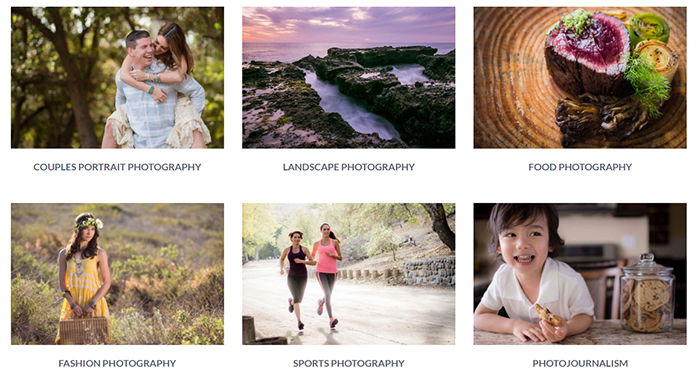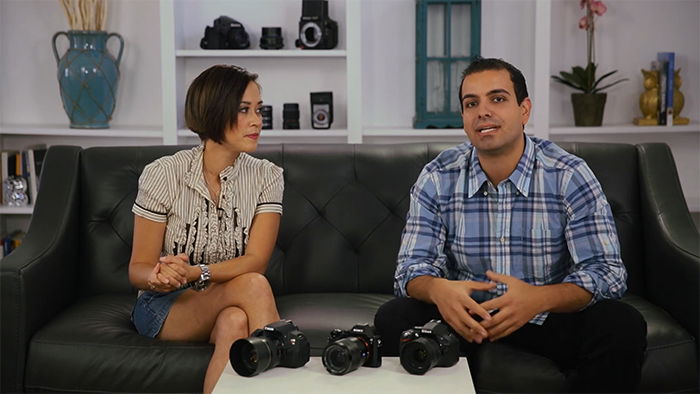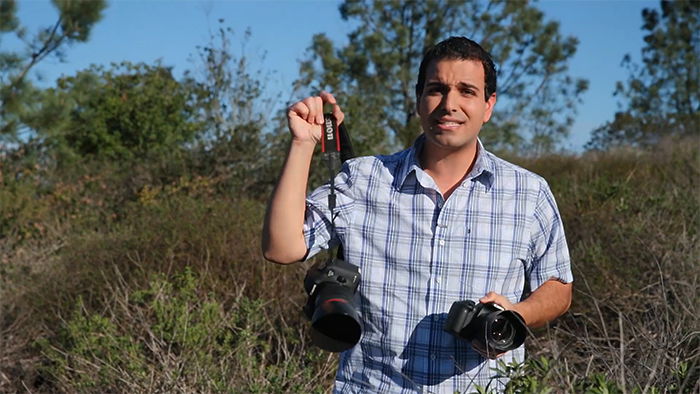SLR Lounge Photography 101 (Video Course Review)
If you’re looking to improve your photography skills, look no further than SLR Lounge Photography 101. This online resource is packed with tutorials on every aspect of photography, from beginner to advanced. You can also find critiques of submitted photos, as well as galleries of inspiring work by other photographers.
SLR Lounge is hosting a Black Friday sale this week. You can get their SLR Lounge Premium Memberships for $300 and $100 off as part of the SLR Lounge Black Friday offer. This includes Photography 101.
SLR Lounge Photography 101: An Overview
Photography 101 is one of the longest beginner courses I’ve seen, at 6.5 hours. Its aim is to bring you from a complete beginner level to a solid intermediate level.
Here are some of the areas it promises to teach you, according to the SLR Lounge website.
About the Creators
The provider of this course, SLR Lounge, is one of the most reputable sites for photography education.
SLR Lounge is based in California. They are a team of experienced professionals. Most of their courses are presented by Pye Jirsa, who is also one of the founders of Lin & Jirsa Photography.
Michelle Ford, the Senior Editor at SLR Lounge, also teaches some of the chapters, together with Pye.
The information is passed on in the form of conversations (between Michelle and Pye) and real-world photoshoots. I find this workshop format an effective way to teach.
Videos From the Course
SLR Lounge published several of the episodes on YouTube, so you can check if you like it. Check out the playlist here.
The Purpose of Photography 101
The course begins with a clear summary of what it aims to provide you.
Mastering Manual Mode is an essential skill. Most beginner courses will stress this, but some fail to teach it properly. I’m confident that this course is good enough to make a beginner understand it perfectly.
How to Expose is a skill that can you can learn very fast at a certain level, but takes a lot of time to perfect. Photography 101 is very detailed in explaining it.
How to Use the Camera is straightforward, but something you shouldn’t overlook or underestimate. Many photographers struggle to bring the most out of their camera because they don’t know the ins and outs of it. This point in the course is not about your specific model, but rather about functions every camera has that are often misused. Things are cleared up very efficiently here.
How to Approach a Scene aims to give you consciousness about photography. This involves objectively looking at the light, the environment, and the elements you can and can’t control. Pye is great in explaining this, however, I do think it’s a tiny bit lacking (more on this later, in the photojournalism section).
How to Light is something few courses teach, but Photography 101 emphasises. There’s not a lot of flash lighting in the course. But it covers working with, controlling, and shaping natural light in great detail.
How to Compose is a competence that thousands of books and hundreds of courses promise to teach on its own. Incorporated into the content of a bigger-scope course, it makes a lot of sense, and it’s an integral part of Photography 101.
Create Incredible Images Regardless of Gear is key. Most photographers don’t realise how much doesn’t depend on gear. Of course, you might have quicker control, higher resolution, or shoot at astronomical ISOs on an expensive camera. But the core is always the same. Pye demonstrates this by using cheap, entry-level DSLRs throughout the course.
Contents
Photography 101 consists of six main chapters, and a bonus chapter.
[modules]
[module title="Basic Photography Concepts"]
[lesson]Photography 101 Trailer[/lesson]
[lesson]The Workshop Format[/lesson]
[lesson]The Camera is Simply a Tool[/lesson]
[lesson]How Does a Camera Work[/lesson]
[lesson]How to Adjust Shutter Speed, Aperture, ISO[/lesson]
[lesson]Exposure Triangle[/lesson]
[lesson]What is a Stop of Light[/lesson]
[lesson]Reading Exposure via the Histogram[/lesson]
[lesson]Blown Highlights or Clipped Details[/lesson]
[lesson]6 Tips to Understanding White Balance and Color Temperature[/lesson]
[/module]
[module title="Understanding Exposure"]
[lesson]No Such Thing as the Correct Exposure[/lesson]
[lesson]How to Measure or Meter Light[/lesson]
[lesson]8 Key Points to Understanding ISO and Image Quality[/lesson]
[lesson]Understanding the 3 Primary Metering Modes[/lesson]
[lesson]How to Get Perfect Exposures in One Shot[/lesson]
[lesson]Equivalent Exposure but Different Images[/lesson]
[lesson]Compensating for Light and Dark Scenes[/lesson]
[/module]
[module title="From Auto Modes to Manual"]
[lesson]Starting with Automated Modes[/lesson]
[lesson]Auto Mode and Flash-Off Mode[/lesson]
[lesson]Portrait Mode on a Fashion Shoot[/lesson]
[lesson]Landscape Mode on the Beach[/lesson]
[lesson]Sports or Action Mode[/lesson]
[lesson]Macro Mode with Food Photography[/lesson]
[lesson]Creative Effects Mode – Floral Photography[/lesson]
[lesson]In-Camera Processing[/lesson]
[lesson]A Glimpse Into Raw Processing[/lesson]
[/module]
[module title="Sharp Images and Focusing Techniques"]
[lesson]AI Servo with Action Shots[/lesson]
[lesson]15 Tips for When You're Having Trouble Focusing Your Camera[/lesson]
[lesson]3 Primary Types of Autofocus[/lesson]
[lesson]Single Shot with Portrait Session[/lesson]
[lesson]Single Shot with Action Shots[/lesson]
[lesson]Focus Recomposing vs AF Point Selection[/lesson]
[lesson]Shutter Speed and the Reciprocal Rule[/lesson]
[lesson]How to Hold a Camera and Panning Tutorial[/lesson]
[/module]
[module title="Composition, Artistry, and Creating Great Images"]
[lesson]How to Find the Right Light Direction[/lesson]
[lesson]What Makes a Great Photograph[/lesson]
[lesson]How to Capture Candid Moments[/lesson]
[lesson]Basic Compositional Theories[/lesson]
[lesson]The Power of Cropping[/lesson]
[lesson]Color Schemes[/lesson]
[lesson]Diving into the Narrative[/lesson]
[lesson]If It's not Working With, It's Probably Working Against[/lesson]
[/module]
[module title="Learning More About Your Camera"]
[lesson]10 Tips on Buying Gear[/lesson]
[lesson]More About Your Camera and Lenses[/lesson]
[lesson]Understanding Megapixels[/lesson]
[lesson]Crop vs. Full Frame Cameras[/lesson]
[lesson]Crop vs. Full Frame Cameras – Demonstration[/lesson]
[lesson]Prime vs. Zoom Lens[/lesson]
[lesson]How the Lens Affects Composition[/lesson]
[lesson]RAW vs. JPEG | The Ultimate Visual Guide[/lesson]
[lesson]5 Tips on Memory Cards[/lesson]
[/module]
[module title="Bonus"]
[lesson]Posing and Action Shots with Female Model[/lesson]
[lesson]Posing and Lighting with Female Model[/lesson]
[lesson]Posing and Lighting Couple Portraits[/lesson]
[/module]
[/modules]
Pricing
There are two options for purchasing Photography 101 from SLR Lounge. You can pay a one-time, $99 price for the course on its own. In this case, you get lifetime access, allowing you to download it, too.
The other one is the SLR Lounge Premium subscription, which costs $348 every year. With the subscription, you can stream all the available courses. You can also download presets, image packs, and more.
While this might sound quite expensive, SLR Lounge offers weeks of high-quality material. If you’re someone who’s passionate or wants to start a photography business, this is a great deal.
Who is Photography 101 For?
Photography 101 is a course aimed for beginner photographers who are passionate and serious about learning.
Understanding and applying its content may be a longer process than with other, less extensive beginner courses.
It’s designed as the first step in your journey in photography. While you’ll learn all the fundamentals, its strongest point is that it opens up your options for further progress. After watching and digesting, you’ll have a pretty clear idea of what and how to pursue in photography.
You’ll get a taste of many things that are interesting for photo newbies. The course places a heavy focus on photography fields that involve people, such as portraits and weddings. But in that 6.5 hours, there’s plenty of time for everything else, too.
What I Loved
Coverage
I’m not sure that everyone would love 6.5 hours of a “beginner” course, but I do. The long extent allows for the information to be more detailed. The points are unwrapped, with more examples and thought processes. There’s not a lot of repetition.
There are plenty of actual photoshoots shown from the beginning to the end (in a nicely edited form). This allows the viewers to get a sneak peek into Pye’s workflow. He supports his explanations of facts with real-world examples.
Having such insights and seeing that what you learn is actually used by a professional is valuable. It makes for a better, deeper learning process, in my opinion.
Shaping Light
This is something that Photography 101 places a significant emphasis on, and I love it. Most courses leave you dealing with natural light. This one teaches you how to tame it. Once you understand the fundamentals of light modifying, your photography will inevitably be more conscious and careful. You’ll be able to subconsciously judge lighting situations you could only understand when reviewing your images.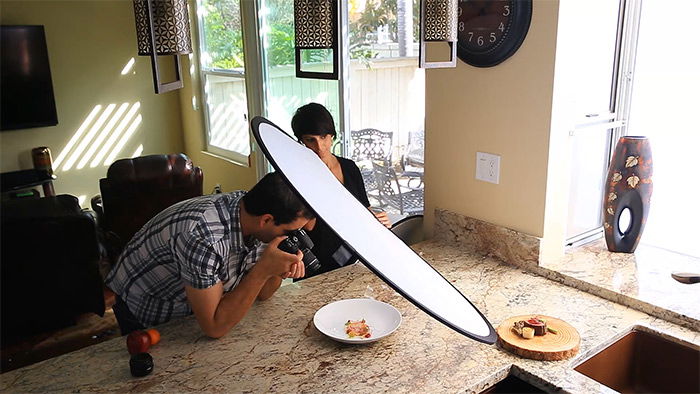
Attention to Detail
It’s rare that I’m proven wrong with technical facts. I’m quite a geek guy, and I sometimes repair gear, so it’s crucial for me to be aware of little things. Usually, I get upset with errors that seem obvious to me (look up my other reviews, you’ll see).
This time, it was different. Throughout the entire 6.5 hours of the course, I didn’t find more than a handful of minor mistakes. They’re not even worth mentioning.
There was actually one thing that really surprised me. When Pye shot a landscape scene, he mentioned that he would use a cheap Nikon D5200 instead of the Canon 5D MkIII because of its much higher dynamic range. As a long-time owner of the latter, I couldn’t believe this and started researching. And he was right.
The care for detail in this course is very high. I’d imagine that the script (or its outlines) went through several rounds of thorough fact and quality checking.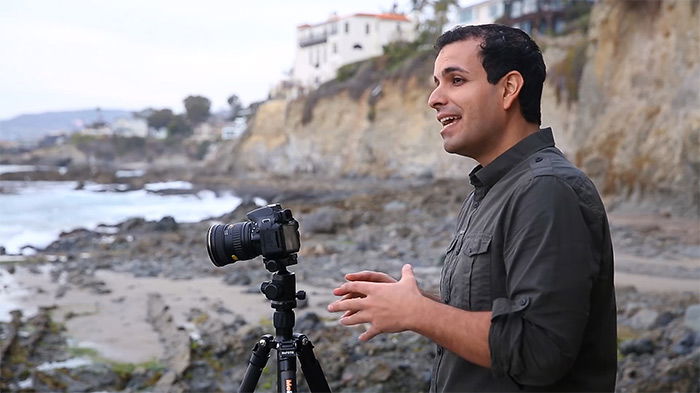
Imagery
Pye is a successful professional photographer, and this becomes clear in the course. Plenty of beginner courses feature amateurish images. Photography 101 is spotless in this aspect.
We see many examples of his past work, as well as beautiful shots from sessions shown in the course. The photos are inspiring, illustrative, and well-thought-out.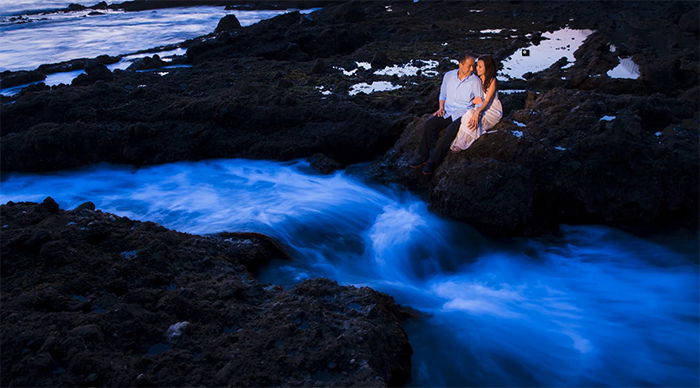
Style and Tone
Pye’s style of teaching is entertaining, while full of information and attention to detail. With the conversations with Michelle, it’s even easier to observe and take in all the information.
A significant part of the course is presented in the form of those conversations. The entertainment factor is these scenes is remarkably high. The whole course is fun to watch.
Production
The production of Photography 101 is remarkably good. The videos are nicely lit and composed, adding to the overall feel of professionalism.
Shooting a 7-hour course at this level of quality is not a small task for any crew (and they mention that it was edited from 20+ hours of raw footage).
There’s very little unnecessary footage, the course is edited densely and contains a lot of valuable knowledge.
Entry-Level Gear
Pye uses entry-level DSLRs throughout Photography 101. He does this to illustrate his point that good photography doesn’t require a high investment. He achieves stunning results with a Canon T5i and a Nikon D5200 – under $500.
Of course, Pye is a talented and experienced professional. You won’t get the same outcome without actually learning photography – but that’s what this course is for. Or, at least, to start you on this long road.
Areas To Improve
While this course is one of the best introductory courses I’ve seen, here’s what I would change.
Photojournalism
There is a chapter about telling a narrative with your photos (the core of photojournalism). This is dubbed as ‘planned photojournalism’.
The entire scene is carefully set up and thought through. But you don’t always have that luxury. In photojournalism (and many other fields, too), you don’t have the option to arrange and light your scene. You have to deal with what’s there already.
I would have liked to see some more instantaneous shoots, showing how to tackle elements out of your control.
Playback
I like that the video player allows to speed up or slow down. However, the function allowing to set a certain resolution didn't seem to do anything. Playback was stuck on 'Auto' for me. Even though my connection is high-speed, it fluctuated constantly.
Also, automatic continuous playback doesn't work in full-screen mode. I had to click out, click on the next chapter, and go to full-screen again all the time.
Neither of these is a big deal, and they are not a fault of SLR Lounge. But they should be fixed.
Alternatives
Digital Camera Mastery
This is Photography Pro‘s offering for beginners. It’s shot really well, has a nice tone, and dives a bit more into landscape and street photography. Its price is similar to Photography 101. Read my review here and check it out here.Photography for Beginners
This is our own introductory video course, also selling for a comparable price. Head over here to check it out.Our Verdict
There is a wide selection of introductory courses on photography. But few are on the same level of quality as Photography 101 from SLR Lounge.
If you have serious plans for photography but are sure about where to start, Photography 101 from SLR Lounge is a fantastic choice.
It’s a great deal on its own for $99 already. But if you’d like to continue expanding your photography, or maybe start a business, their subscription model is a no-brainer offer.
Even if you’re aiming to be an expert in landscape photography, it’s still worth watching. You won’t learn much of that particular field, but the general knowledge and mindset you get from Photography 101 are invaluable.
Visit SLR Lounge’s site for more information and buying options.
Scores
To standardise and compare our product reviews, we’ve decided to use a scored-based ranking system. To learn more about interpreting these numbers and how other courses measure, please visit our review roundup page here.
[scores price="no" product="31072″ tag="expertphotog-20″ toc="no" left_title="Measurement" right_title="Score"]
